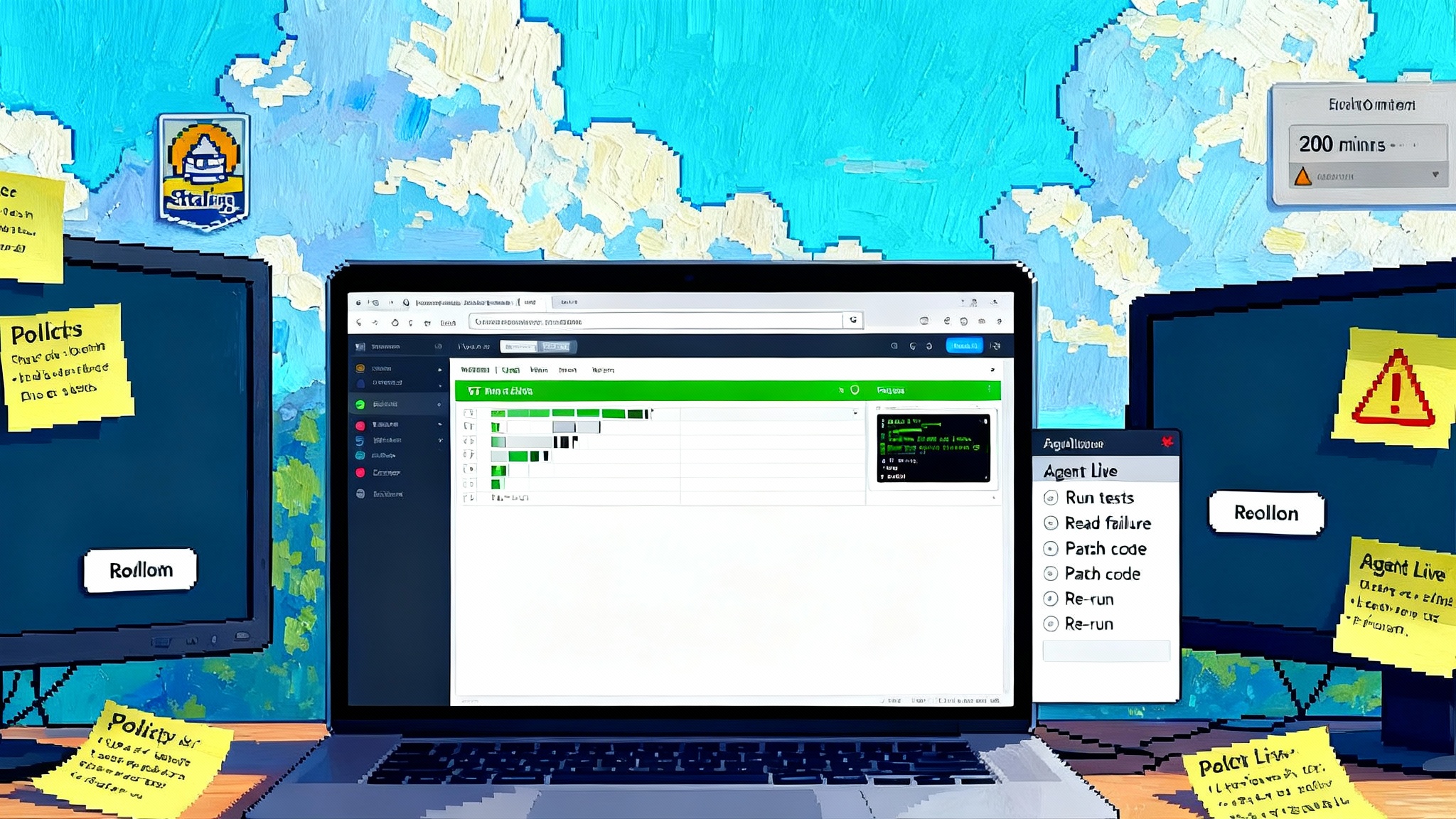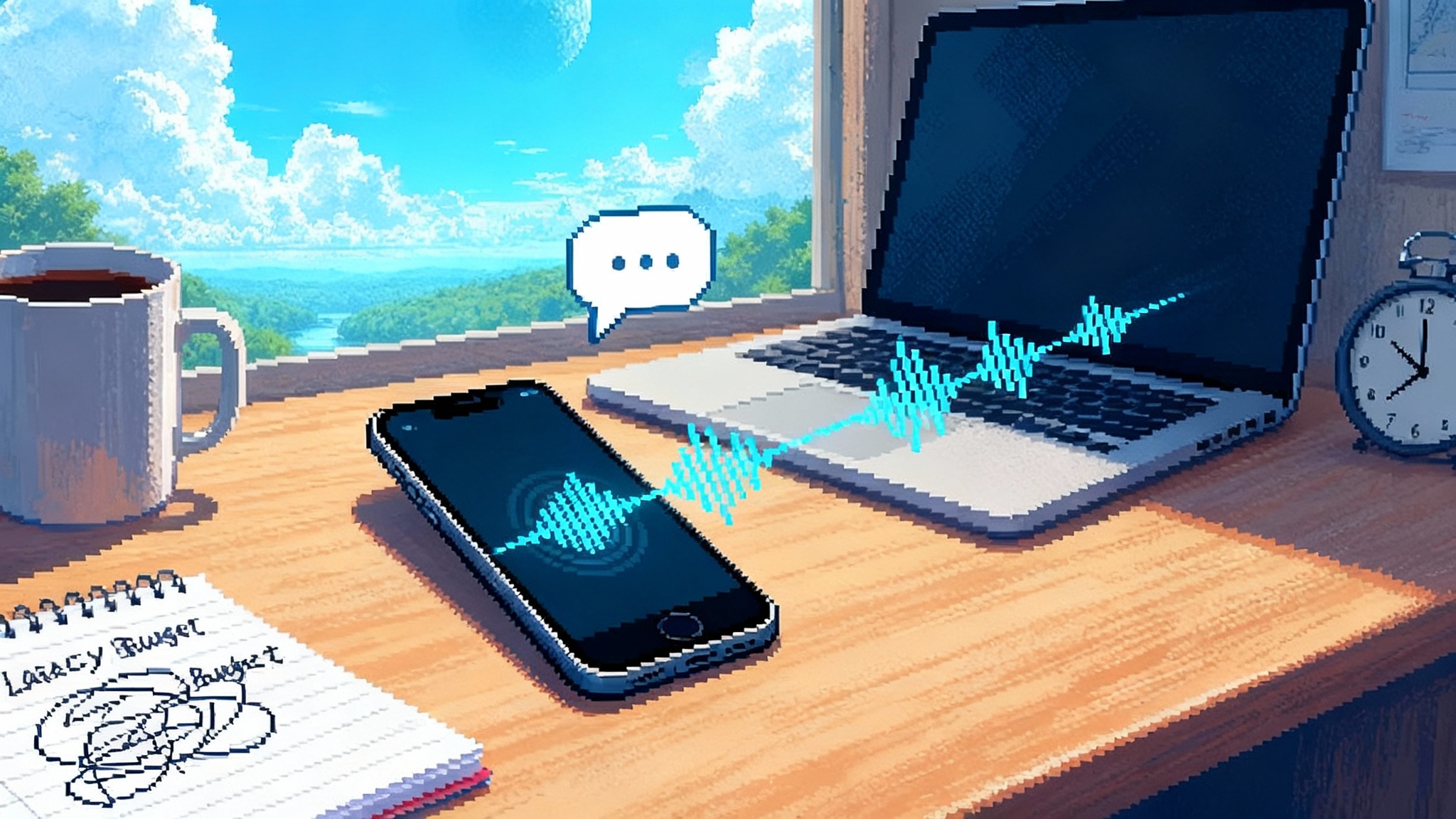AI Goes Wearable: Sesame’s Voice-First Glasses Beta
Sesame has opened a beta for voice-native AI glasses, and it hints at a major platform shift. Here is how speech, continuous context, and hands-free design reshape products, developer playbooks, and business models.

Breaking: Sesame’s beta puts voice on your face
Late October brought a quiet but meaningful shift. Sesame opened an early beta for its voice-first AI glasses, inviting testers to try a lightweight pair that talks and listens like a person. If the last two years were about large language models living inside chat windows, this next wave looks different. It is not about typing. It is about speaking, listening, and glancing. It is about an assistant that feels present and wearable.
Treat this as a bellwether. Smart glasses are moving from accessory to interface, and voice is becoming the primary way to use them. That may sound cosmetic until you look closely at what it does to the core of product design, developer platforms, and business models.
Why the next wave leaves chat windows behind
Typing makes sense on a laptop. On your face, it does not. Voice is the only input most people can use while walking, cooking, fixing a bike chain, or carrying groceries. When glasses remove the friction of pulling out a phone and the awkwardness of talking to the air, the interface with the lowest activation energy wins.
Think of chat as a corridor and voice as a room. In a corridor you move in a line, one prompt after another. In a room you can look around, interrupt, point, and refer to things without naming them formally. This is why a voice-native device can feel smarter without any extra model size. The medium expands the space of what counts as a natural command.
The implications for builders are practical:
- Reduce keystroke dependency and optimize for sub second audio response.
- Design commands around verbs and pronouns, not long nouns and forms.
- Expect frequent interruptions and overlapping speech. Plan for barge in.
Direct speech generation becomes the interface
Most assistants still use a pipeline. They generate text, then pass it to a text to speech engine. That two step process adds latency and often sounds robotic because the voice does not know what the next words will be until it reaches them. Direct speech generation collapses that gap. The model speaks the way a person does, choosing words, intonation, and timing together. It can change course mid sentence, insert a quick laugh, or pause to let you jump in.
For product teams, this is not just flourish. It alters four fundamentals:
- Latency: Streaming speech can keep response times under a quarter second so the conversation feels alive. Below that threshold, people stop waiting and start overlapping, which makes interactions feel like real dialogue.
- Prosody control: Pitch, pace, and emphasis can adjust in real time. A tutor can slow down on key steps, a coach can lift energy before a workout, and a safety assistant can speak clearly and calmly when it detects stress in a voice sample.
- Barge in: Users can interrupt naturally. The agent should pick up intent mid turn, just like a good barista who starts your usual when you say the first few words.
- Turn taking as a design surface: Pauses, confirmations, and short acknowledgments become part of the interface. A glasses agent can say, “Got it, keep going,” without breaking your stride.
When speech is the interface, writing product copy becomes writing dialogue beats. The craft looks more like directing radio than arranging buttons.
Continuous context turns glasses into a memory
A phone assistant often hears isolated requests. Glasses can build a continuous thread. They can remember that you looked at a stuck door hinge ten minutes ago, that you asked about a Phillips head screwdriver, that you are now in aisle 14 of a hardware store, and that your hands are busy. That is a different class of context.
Continuous context comes from a mix of signals: your voice, head direction, movement, ambient sound, and optional camera frames. With sensible privacy defaults, a voice-first agent can hold a rolling memory that makes every next action faster. Instead of you repeating yourself, the assistant carries the thread.
Concretely, this means:
- Fewer nouns, more pronouns: “That one, tighten it a little” should work because the agent knows what “that” is from the last glance.
- Temporal glue: “As we did yesterday” or “just like the front door” should retrieve procedures without you hunting for a note.
- Situated steps: Instructions can be broken into micro actions with checks, such as “You tightened the top two screws, now do the bottom right.”
The payoff is not flair. It is task completion speed. Continuous context shortens the distance between intention and outcome.
Hands free changes the product playbook
Hands free is more than convenient. It rewrites constraints. When the user cannot tap and swipe, you must redesign your product as a sequence of tiny conversational moves and micro confirmations.
- Micro interactions: Replace stateful screens with two to five word calls and responses. “Start timer ten minutes.” “Started. Out loud or silent?” “Silent.”
- Fallback visuals: Use brief glanceable cues in the glasses only when needed, such as a checkmark or arrow. Voice carries the logic. The display resolves uncertainty.
- Error handling: Treat misunderstandings as a normal part of flow. Ask for one missing detail at a time, never more than that. “Which Cameron, Chen or Diaz?” beats “I found multiple matches, please specify full name.”
- Physical awareness: Assume the user is in motion, outside, or in a noisy room. Confirm when confidence is low and switch to visual hints when audio confidence drops.
The result looks less like an app and more like a good coworker, fast and unintrusive.
A near term agent app store
An agent app store will not look like today’s phone stores. Expect three shelves, each structured around what voice and context make possible.
- Voice utilities. Single purpose tools that do one thing instantly: summarize a page, translate the next sentence, log pain level, measure split times, capture a three item shopping list. They run in under ten seconds, require no tutorial, and return to idle quietly.
- Contextual companions. Persistent agents that live with you through a task or a period of time: a running coach for the morning, a sous chef for dinner, a bike repair guide for an afternoon, a study partner for the semester. They carry state, borrow memory, and nudge when helpful.
- Professional sidekicks. Vertical agents that plug into real workflows: a home electrician’s inspector, a field technician’s triage partner, a nurse’s documentation scribe, a salesperson’s site visit recorder. They integrate with scheduling, inventory, or records and they produce artifacts a manager or client can trust.
Instead of icons and screenshots, listings will feature voice samples, latency clips, and privacy disclosures. Ratings will focus on reliability under noise, accuracy in domain, and how gracefully the agent repairs misunderstandings.
For comparisons across the ecosystem, see how vertical operators define reliability and artifacts in Harvey's agent fabric insights and how approval controls shape safety in approval gated agents in MSPs.
How startups can ship before big tech saturates hardware
Hardware cycles move slowly. Software can move now. Startups do not need to build glasses to build great glasses agents. Ship on the phone first, optimize for voice and continuous context, then ride onto wearables as they open to third parties.
A practical path:
- Pick a measurable job. Choose a task where success is obvious and frequency is high. Example: reduce equipment downtime for rooftop HVAC maintenance, measured in minutes saved per visit.
- Design for dialogue. Write the entire workflow as a script with branches. Replace every form field with a short verbal exchange. Keep a paper transcript of a perfect run and a messy run.
- Capture domain memory. Collect checklists, common faults, photos of parts, and typical resolutions. Index a compact model over this corpus so the agent speaks the local language of the trade.
- Deliver artifacts. End every session with something that stands up to scrutiny: a time stamped maintenance report, a quote, a care note, an insurance photo set. Artifacts are how agents prove they did real work.
- Build the adapter layer. Treat each platform as a transport. Make your agent callable through microphone and speaker on any device, with optional camera frames as hints. When glasses open to third parties, you will already have a voice-first product that fits.
For a concrete example of packaging early traction into a business, study how Appy.AI productizes agents and adapt that template to voice centric use cases.
A reference stack for voice-first wearable agents
Teams ask what to build now versus later. Here is a pragmatic stack that avoids over engineering while keeping options open.
- Input capture: Low power microphone array with wake word and noise suppression. On phone, rely on mobile OS features. On glasses, assume beamforming and wind mitigation.
- Wake and intent: Lightweight wake word detector that hands off to streaming ASR only when active. For privacy, favor on device wake.
- Streaming ASR: Partial hypotheses must arrive within 150 milliseconds at 8 to 16 kHz. Treat word timings as soft, not exact.
- Semantic layer: A small instruction tuned model that translates partial transcripts into intents and slots. For multimodal hints, feed head pose, location, and recent objects as key value context.
- Dialogue state: Rolling memory with time decay. Store last few minutes at high resolution, then compress. Mark sensitive items for immediate deletion if the user or policy requires it.
- Direct speech generation: Neural vocoder attached to a streaming decoder. Target under 250 milliseconds first phoneme latency and under 50 milliseconds inter phoneme cadence. Add style tokens for tone.
- Tools and actions: A safe tool layer that executes side effects such as starting timers, searching manuals, fetching records, or generating reports. All side effects should return artifacts or confirmations.
- Observability: Per turn logs with audio confidence, latency breakdown, and final outcome tags. Build a test harness that can replay noisy environments.
This stack can run on a phone today and map to glasses later. The only major swap is the input hardware and the amount of on device processing you push closer to the frame.
Privacy, safety, and trust by default
Glasses introduce intimacy. They are on your face, near other people’s faces, and in public spaces. Trust must be designed in from the first prototype.
- Clear capture boundaries: A visible indicator when audio is streaming and a second indicator if camera frames are captured. Provide a one tap or one word kill switch.
- Short retention by default: Keep rolling buffers measured in minutes for context, not hours. Allow the user to freeze part of the buffer into notes or artifacts when they choose.
- On device preference: Perform wake detection and quick commands locally where possible. Cloud only when needed for quality and with explicit consent.
- Context scoping: Limit what context is available to which tools. A grocery list should not flow into a work ticket unless the user asks.
- Transparent artifacts: Every action that matters to another person, such as a quote or report, should be traceable and editable. Make provenance visible.
If you operationalize these rules early, you will be ready when regulators and customers ask hard questions.
Metrics that actually matter
The most common mistake is to optimize model benchmarks instead of experience outcomes. Track these instead:
- Time to first phoneme: From user stop to agent start, target under 250 milliseconds.
- Barge in success rate: Percent of attempts where the agent recovers cleanly after an interruption.
- Task completion time: Seconds from first request to confirmed outcome for the top five jobs.
- Correction rate: Share of turns where the user had to restate or correct the agent.
- Artifact acceptance: Percentage of generated reports or notes accepted without edits by a human reviewer.
- Retention by task: Do users come back for the same job next week.
These align with what users feel and what buyers pay for.
A 90 day plan to test the thesis
If you run a small team, here is a time boxed plan to turn the Sesame moment into validated learning.
- Days 1 to 10: Pick one vertical job and write the dialogue script. Record sample sessions with two amateurs and one domain expert. Annotate where interruptions happen and where visual hints help.
- Days 11 to 30: Build the streaming loop with wake, ASR, semantic layer, and direct speech. Hard code three tools. Support a single wake word and one fallback phrase for privacy.
- Days 31 to 60: Add rolling memory. Introduce two glanceable visuals and one error repair pattern. Start logging all metrics listed above.
- Days 61 to 90: Run ten on site pilots in real environments. Deliver artifacts for every session. Measure minutes saved, correction rate, and artifact acceptance. Decide whether to expand features or double down on reliability.
By day 90 you will know if you have a product shaped by voice and context, not a demo held together by a script.
Red flags and failure modes to avoid
Builders tend to underestimate physical and social constraints. Watch for these:
- Audibility hubris: Assuming people will speak at full voice in public. Design for quiet speech and partial commands.
- Visual overreach: Cramming UI into the lens. Keep visuals sparse and legible. Use them when audio confidence drops.
- Memory creep: Letting the rolling buffer grow without clear deletion rules. Short memory can be a feature, not a bug.
- Artifact drift: Generating documents that look pretty but fail review. Define acceptance criteria with the buyer and test against it weekly.
- Platform lock in: Building deeply for one hardware vendor too early. Keep your agent modular so you can port when third party access opens.
What this means for incumbents and upstarts
Platform shifts are rarely loud at first. Early adopters are not just chasing novelty. They are searching for new constraints that create new winners. Voice-first wearables are exactly that sort of constraint. They favor teams who can choreograph fast dialogue, compress context into memory, and ship artifacts that matter to a boss.
- Consumer angle: Expect fitness, cooking, shopping, and travel to see the first delights. Utilities and companions will lead.
- Prosumer and field work: Expect maintenance, inspections, and documentation to see measurable ROI. Sidekicks will lead.
- Enterprise: Expect pilots that tie to compliance and throughput. Success will hinge on tool integration and artifact quality.
The companies that treat Sesame’s beta as a signal will write scripts, not slide decks. They will measure corrections, not clicks. They will sell outcomes, not features.
The quiet platform shift, in plain view
Voice-first smart glasses do not need flashy demos to matter. They need to be polite, fast, and helpful while your hands are busy. Sesame opening its beta in late October is a reminder that the best interfaces often look simple on the surface and sophisticated underneath. If you are building in this space, your advantage will come from taste in constraints. Keep latency low, make memory useful, and deliver artifacts that survive scrutiny. The rest is implementation detail.
As the ecosystem matures, watch how agent builders package reliability, guardrails, and business value. The teams that master those will be ready when wearables open to third parties at scale. And when that happens, the apps that win will sound less like apps and more like people who know how to help.








